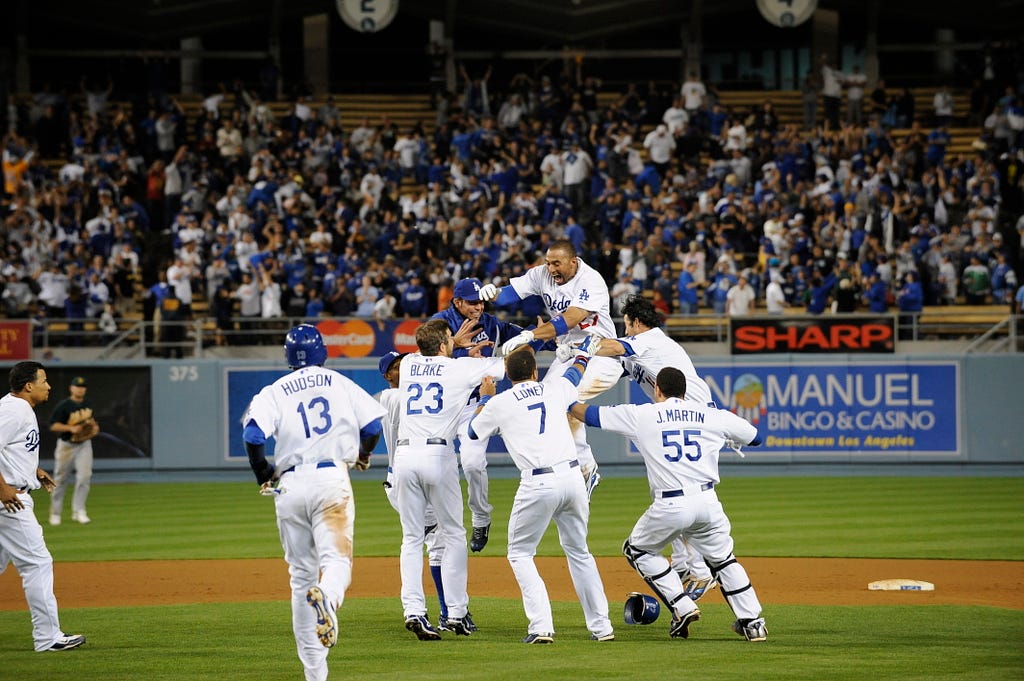
Editor’s Note: This story is from the pages of Dodger Insider magazine, 2024 Volume 8. Magazines are available at entry at parking stands at Dodger Stadium.
by Cary Osborne
Matt Kemp’s eyes were hidden by blue-framed shades. He could see out, but no one could see in. He saw a line of teammates, a familiar stadium and more than 50,000 people roaring for him like they did all those years ago.
This was the site of his beginning, also his greatest triumphs and some of his most difficult times. It’s where he became a superstar and where in 2015 he became a visitor after the Dodgers traded the former All-Star outfielder to the San Diego Padres.
Kemp was reacquired by the Dodgers before the 2018 season, and it wasn’t certain that he would even be on the Major League club on Opening Day, as nothing was promised to him in Spring Training.
But March 29, 2018, was his return and his next great triumph as a Dodger. He was a starter in the lineup for the Dodgers on Opening Day at Dodger Stadium.
Kemp’s name was called for the traditional Opening Day introductions, and he skipped twice out of the dugout into a jog.
“You couldn’t see under those glasses, but I had tears coming down my eyes,” Kemp recalls. “It was probably one of the most amazing moments that I ever had in a Dodger uniform.”
That’s saying something — because there were a lot of amazing moments.
Kemp was the raw-athlete-turned-rookie who helped usher in an exciting Dodger youth movement. He was an electrifying superstar with movie star looks fit for Hollywood’s baseball team. He was power and speed — the author of one of the greatest seasons in franchise history.
His beginning, his middle and his end make him one of the more compelling figures to have worn a Dodger uniform.
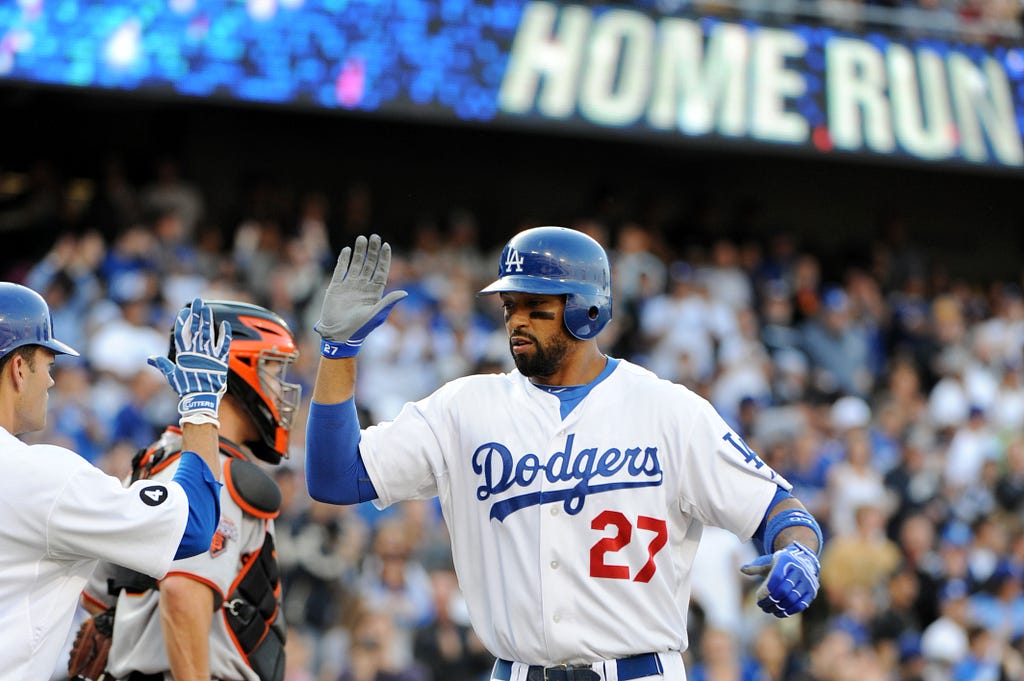
“He’s that bison — that guy who went out and made plays on defense, got on the basepaths and stole bases, and went in the batter’s box and his physicality to hit the baseball was unbelievable,” says Andre Ethier, his former longtime Dodger teammate.
Kemp’s return to Dodger Stadium for Dodgers Alumni Weekend closes a chapter on an impactful career.
The 39-year-old last played a Major League game in 2020 as a member of the Colorado Rockies. But in the years after, he didn’t formally retire.
This is closure for him, though, as Matt Kemp Day at Dodger Stadium is the symbolic end of his career as a player. It’s been difficult to accept — having played the sport since he was 4 and professionally since he was 18. But Kemp is finally in a place where he is good with its end.
“I think in my mind, I had known it, like it was over. But I just didn’t want to say the words,” Kemp says. “You go through those emotions, and you go through those times, and then you’re like, all right, it’s time to just say goodbye.”
The memories are vivid for a player who painted landscapes with his thrilling moments.
Kemp, as a youth, was a basketball-first athlete. That word — raw — followed him throughout his professional career, which began when the Dodgers selected him in the sixth round of the 2003 Major League Baseball Draft.
Kemp, then a Dodger Minor League prospect who hadn’t reached Double-A to that point, had made a big impression in Spring Training 2006. Dodger manager Grady Little called Kemp into his office at one point and complimented him on his play, but told him he would be starting the season in Double-A. Little, Kemp recalls, said he was hopeful to see him in the big leagues in 2007.
“I told him I’d see him in a month,” Kemp responded. “And he kind of laughed, but he looked at me like, ‘Oh, this kid is serious.’ I was in the big league in like six weeks.”
Kemp made his Major League debut on May 28, 2006, and was a ball of fire in his first 15 games — seven home runs, 16 RBI and a 1.287 OPS. But by mid-July he had cooled and was sent back down to Triple-A Las Vegas. He returned when rosters were expanded in September.
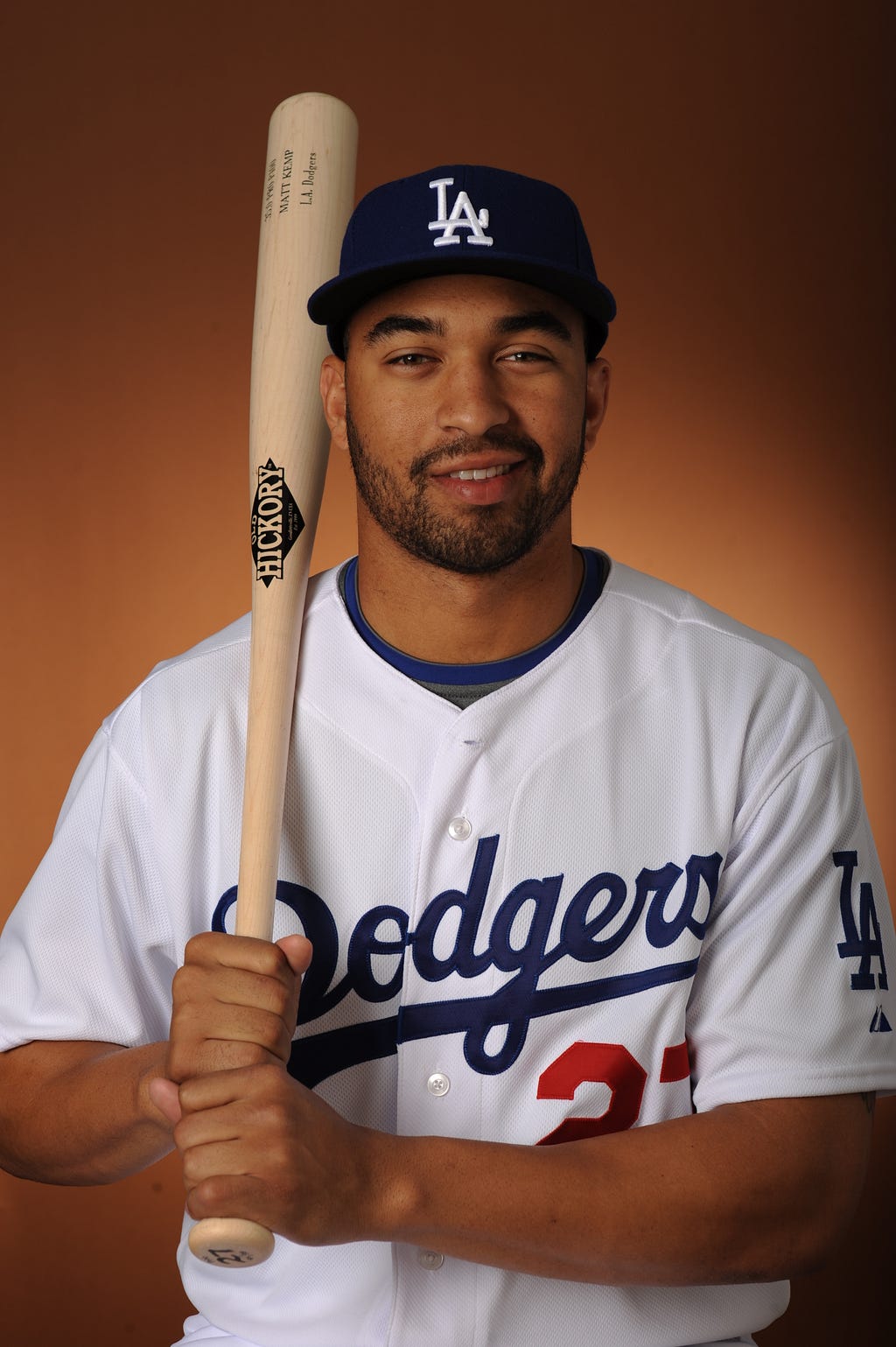
Three seasons later in 2009, he was a Gold Glove Award winner and Silver Slugger. He was also the top player, by measure of Wins Above Replacement (WAR) on a Dodger team that played in the National League Championship Series.
Kemp’s production led to enormous expectations for him and the Dodgers in 2010.
They finished fourth in the NL West. He played in all 162 games, hit 28 home runs and drove in 89 runs. But he batted .249/.310/.450/.760.
“‘Oh, he fell off. He’s not this, he’s not that anymore,’” Kemp remembers as the narrative. “But now they want guys that hit that. But going through that, it helped me. It helped me to have the season I had the next year and the next year after that.”
Kemp came back on a mission in 2011. He leaned out and was firmly dedicated to staying on a training and conditioning plan, which in the offseason included running sprints on a track. Kemp walked into the clubhouse every day with his own meal prepped.
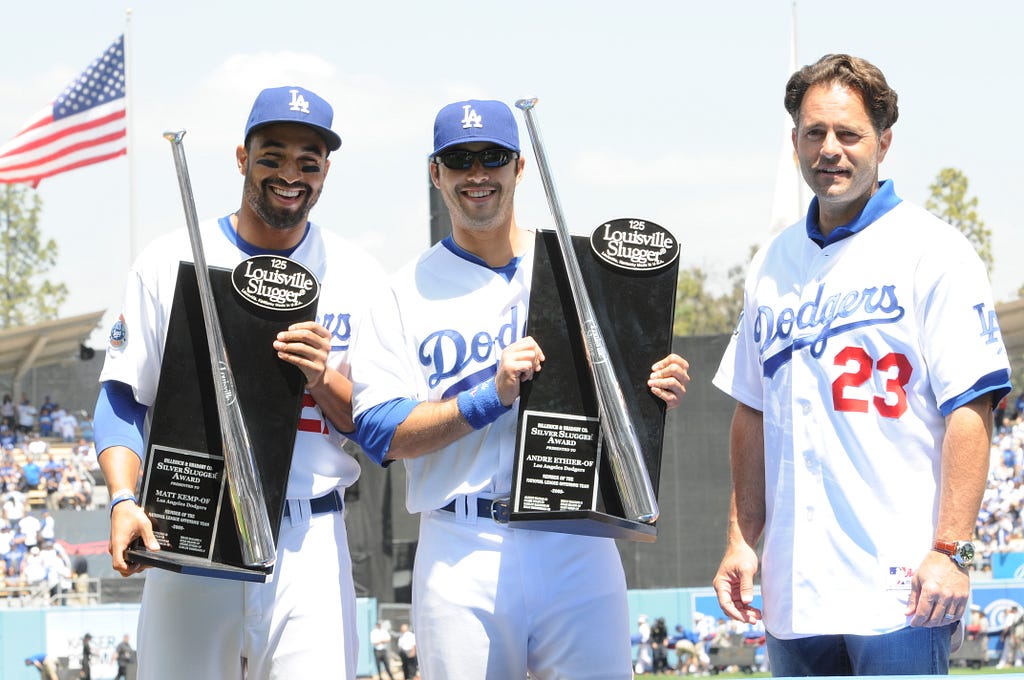
And he simplified his swing.
Kemp used to have a leg kick for timing. Manny Ramirez, who played for the Dodgers from 2008–2009, helped Kemp in coordinating the leg kick with his swing. With Ramirez no longer around to keep him right, Kemp says he had fallen into some bad habits.
In the 2010 offseason, he began watching video of some of his favorite hitters, notably Albert Pujols. He watched how Pujols had a simple stride and took a baby step when he swung.
Kemp began to emulate it, and with the new athletic body, he began to emulate Pujols’ numbers.
By the end of the 2011 campaign, Kemp turned in one of the most productive seasons in Dodger history. He led the NL in home runs (39), runs (115), total bases (353), and he led the Majors with 126 RBI. He batted .324/.399/.586/.986 and also stole 40 bases, becoming the only Dodger in history with a 30 home run/40 stolen base season.
“You could tell in spring that year, he came back on mission,” Ethier says. “I hadn’t had a teammate perform that way ever before. Actually, throughout my career, I never had a teammate who performed that way.”
Kemp finished second in the NL MVP voting that season in what is regarded as one of the more controversial outcomes in the award’s history. Milwaukee’s Ryan Braun, who won the MVP in 2011, later admitted having taken performing-enhancing drugs that season.
“Matt was the best player in baseball that year,” says Dodger pitcher Clayton Kershaw, who was Kemp’s teammate for eight seasons. “He kind of did everything — he played every day, stole bases, hit homers, played defense. We definitely thought he deserved the MVP that year. Looking back on it, he did deserve the MVP.”
Kemp, nonetheless, was one of baseball’s biggest stars. In November, he signed the biggest contract in franchise history and at a length of eight years. He showed up to Dodger Stadium for the press conference wearing a perfectly fitted suit and bow tie.
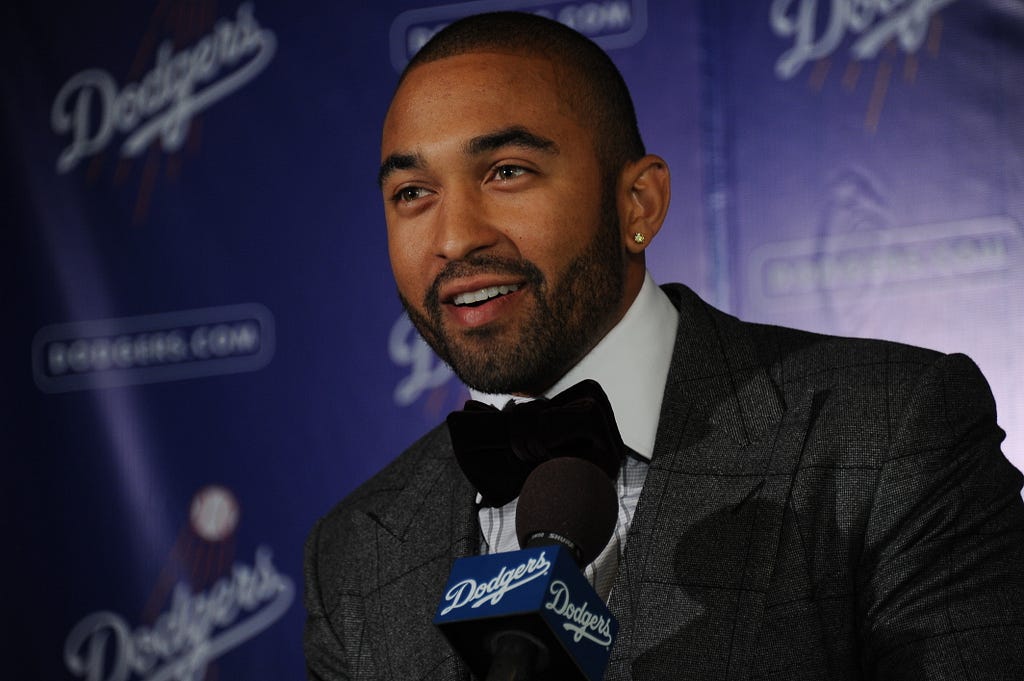
“My Tom Ford suit,” he says. “I still have that suit.”
A series of misfortunes befell Kemp in 2012 — first, hamstring issues, then later on Aug. 28, 2012, when he crashed into the wall in center field at Coors Field in Denver. He had surgery to repair a torn labrum in his left shoulder in the offseason. He had another surgery on the shoulder in the 2013 offseason. He also had surgery on a damaged left ankle, which was the result of a slide at home plate in Washington on July 21, 2013. Doctors told him after the slide that he needed to shut it down for the season or he risked permanently damaging the talus bone, which forms the ankle joint and supports the weight of the leg.
Kemp used to finish high on his swing. The labrum wouldn’t allow him to do it. He couldn’t roll over on his ankle for fear that putting weight on it would further damage it. So he would spin off it.
Power and speed were his game. Now both were compromised.
But he was back to being an everyday player in 2014. He hit 25 home runs and had an .852 OPS.
“Matt did a good job of coming back,” Kershaw says. “Yeah, it would have been awesome to see during kind of his peak what he would have been like if that didn’t happen, but there’s no point in looking at that. In 2012, that first month of April was I think the best month he’s ever had before he got hurt. He was hitting in the .400s, he had like 12 or 13 homers in April, and it was just on another level. It was a bummer to see him get hurt. But he had a great career and did a lot of impressive things.”
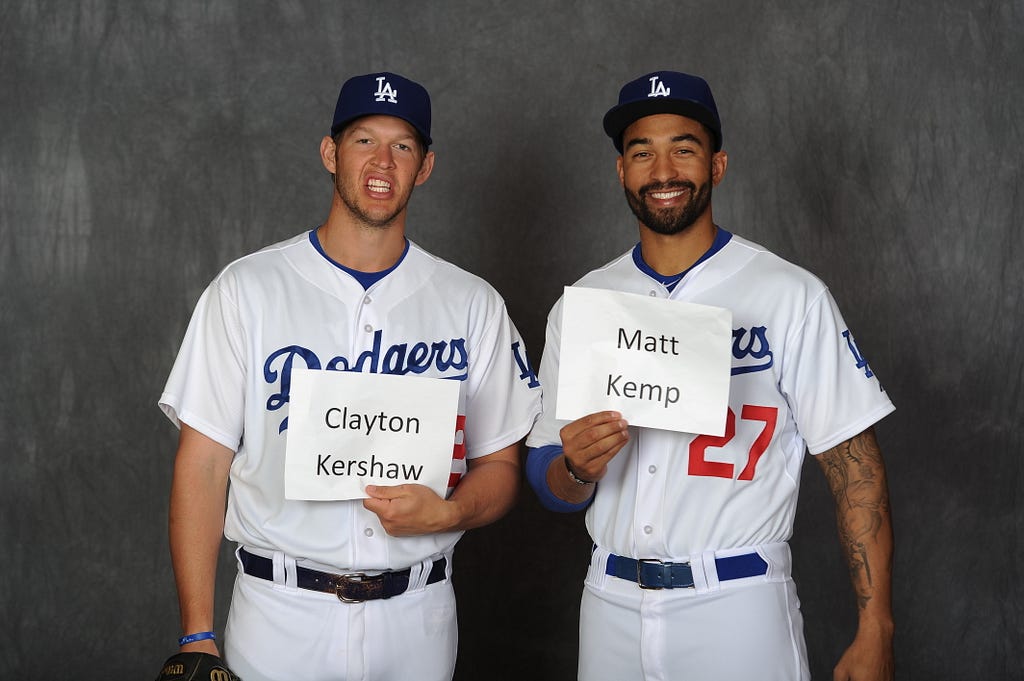
Good memory. Kemp hit .417 with 12 home runs in April 2012.
But three seasons later, he was wearing a different uniform.
On Dec. 18, 2014, the Dodgers traded Kemp in a five-player deal to the San Diego Padres.
“It hurt a lot,” Kemp says. “But as I had gotten older, I learned that that was just part of the business. But they kind of redeemed themselves and let me come back 2018.”
Kemp was a member of the Atlanta Braves in December 2017 when he was out to lunch with some friends. His agent called and told him the Dodgers had just traded for him.
But it wasn’t a certainty at the time that the Dodgers would keep Kemp.
He recalls telling Dodgers President of Baseball Operations Andrew Friedman: “Man, just give me a chance to come to training camp. I want to be honest. I want to be back in LA. I miss LA. I miss my people. Miss the fans. I miss the clubhouse guys, the elevator guys. I just miss everything about the organization.”
Kemp came to training camp. He made the Opening Day roster. He started in left field and batted sixth on March 29, 2018.
Kemp’s 2018 season was his last triumph as a Dodger. He was an All-Star, hit 21 home runs with a .290 average and .818 OPS in 146 games. He was back in the postseason and hit a home run in the World Series.
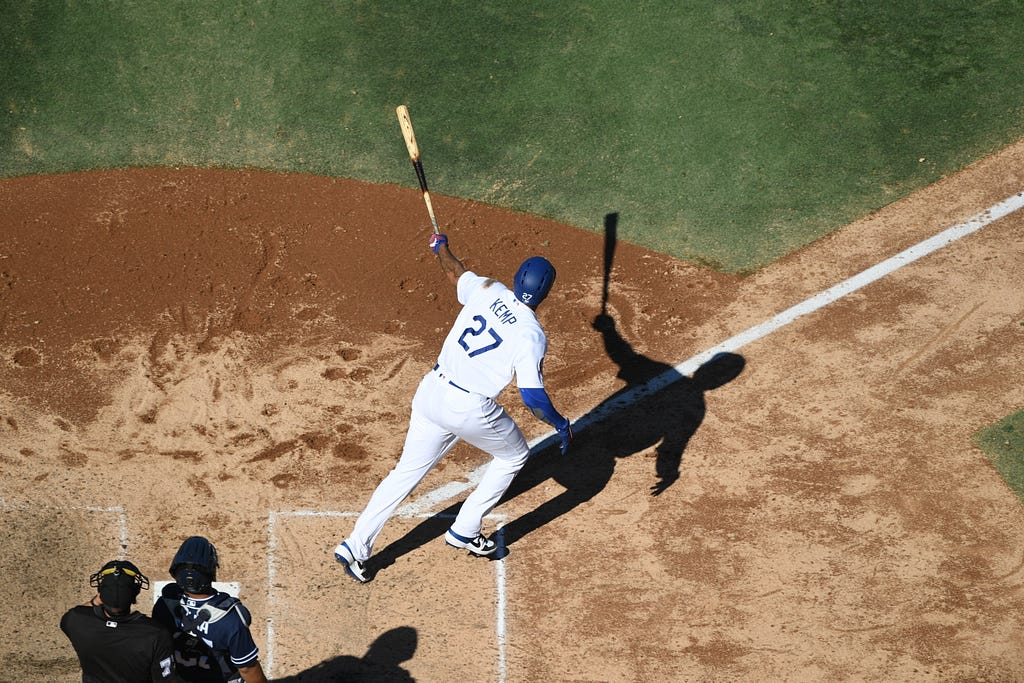
The Dodgers traded Kemp to Cincinnati after the season. But the 2018 season is one of the most meaningful of his career.
“That was, hands down, one of my most special seasons,” Kemp says.
Kemp hasn’t put on a Dodger jersey with the №27 at Dodger Stadium since Oct. 28, 2018 — Game 5 of the World Series.
He knows all the memories and all the feelings will return when he does again on Matt Kemp Day. They have already begun returning.
“I don’t know if people really realize the impact they made till they kind of sit back and take everything in,” Kemp says. “Because when you’re playing for so long and you’re just worried about what I got to do next, it’s hard to just sit back kind of think about (it). I’m always having people reach out on my Instagram just telling me how much I helped them with a situation, and I was just playing a baseball game. So it’s pretty cool to be able to sit back and feel that love now.”
From Dodger Insider magazine: Matt Kemp, one more return was originally published in Dodger Insider on Medium, where people are continuing the conversation by highlighting and responding to this story.